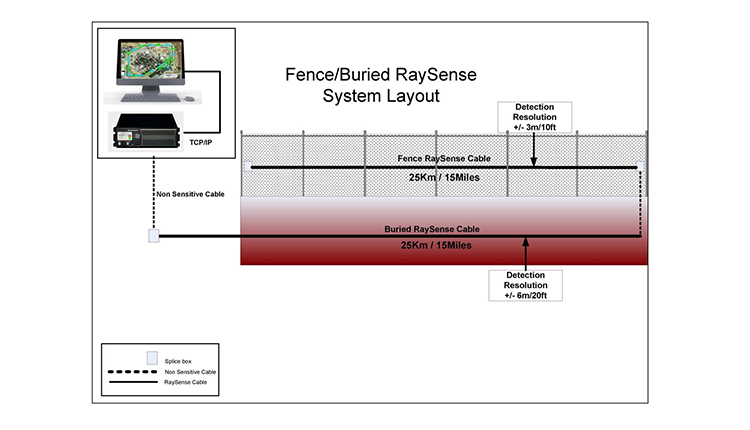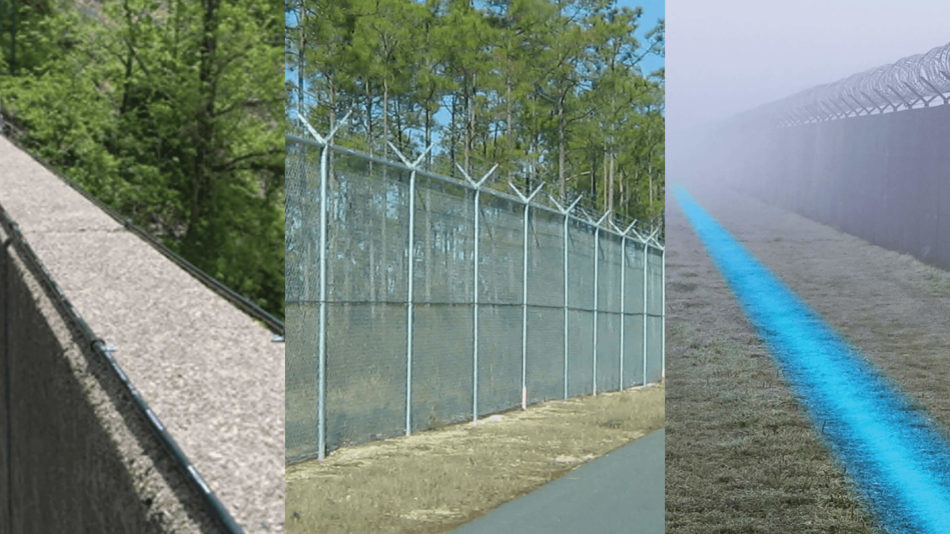How Security Fibers Are Used to Enhance the Efficiency of Security Surveillance Systems
Wiki Article
Improve Your Safety And Security With Advanced Fiber Optic Protection Systems
In an era where safety is extremely important, innovative fiber optic security systems provide an engaging remedy for boosting security throughout different settings. These systems not only flaunt exceptional transmission capacity and rate for high-resolution surveillance but likewise offer impressive durability against external interferences. As companies progressively seek trustworthy means to safeguard their properties, the combination of cutting-edge technologies like AI and IoT within fiber optic structures increases vital questions concerning their efficiency compared to traditional systems. What implications do these advancements hold for future security procedures?Advantages of Fiber Optic Security
Using the advantages of fiber optic modern technology considerably enhances security systems throughout different applications. One of the key advantages is the raised data transfer capacity, enabling the transmission of huge quantities of information at high speeds. This is especially vital for real-time video clip monitoring, where high-resolution feeds can be sent out without latency, ensuring prompt action abilities.Furthermore, fiber optics exhibit premium resistance to electro-magnetic interference, which is vital in environments with possible signal disturbances. This integrity guarantees regular efficiency in critical safety and security operations. Fiber optic cords are less vulnerable to touching and unapproved access compared to standard copper wiring, consequently improving data honesty and privacy.
Another notable advantage is the longevity of fiber optic systems; they are extra resistant to ecological aspects such as dampness, temperature level fluctuations, and harsh materials. This resilience converts to reduce upkeep expenses and longer lifespans for security installations.
Lastly, the light-weight nature of fiber optic cable televisions facilitates less complicated installation and transmitting, specifically in intricate frameworks (fiber optic security system). Inevitably, the combination of fiber optic technology right into safety and security systems not just strengthens defense steps however likewise enhances functional effectiveness
Trick Features to Think About
When evaluating fiber optic security systems, a number of vital attributes must be considered to make certain optimal efficiency and effectiveness. Evaluate the system's detection range and sensitivity; a substantial range permits for keeping track of large locations, while high level of sensitivity ensures that also minor disturbances are spotted quickly.Following, take into consideration the assimilation abilities of the system. A fiber optic safety system must effortlessly interface with existing protection actions such as video cameras and alarms, creating a cohesive safety network.
Durability and ecological resistance are also important attributes. Make sure that the system is created to hold up against severe climate condition and possible physical threats, as this will lengthen its functional life expectancy.

Last but not least, check out the scalability of the system. A robust fiber optic protection system ought to be conveniently expandable to accommodate future demands without substantial overhauls. By thoroughly taking into consideration these functions, you can select a fiber optic protection service that boosts security and protection in your setting.
Installment Process Summary
To effectively apply a fiber optic protection system, an organized installment procedure is important. This procedure begins with a thorough site assessment to determine the specific safety needs and to recognize optimum locations for fiber optic wires and security devices. Following this assessment, the installation team will establish an in-depth strategy, consisting of cord pathways, required equipment, and compliance with neighborhood guidelines.Next, the installation includes laying the fiber optic cables, ensuring they are protected from environmental aspects and physical damage. Correct handling methods are vital, as fiber optic wires are sensitive and can be quickly harmed. After the cabling is installed, ports and discontinuations are carefully completed to guarantee signal stability.
The succeeding stage includes setting up safety tools such as cams, movement detectors, and security system, all integrated with the fiber optic network. Strenuous screening is carried out to verify that all components are operating appropriately and to ensure optimum efficiency.

Contrasting Fiber Optic to Conventional Solutions
The development of security modern technology has actually brought about significant advancements in the comparison in between fiber optic systems and traditional copper-based systems. Fiber optic systems utilize light to transfer information, supplying premium data transfer and speed compared to their copper equivalents. This results in improved information transmission capacities, making optical fiber excellent for high-resolution video clip monitoring and real-time tracking.this content Additionally, fiber optic cable televisions are immune to electromagnetic interference, decreasing the chance of signal deterioration triggered by external aspects. This particular ensures regular performance, also in tough settings. In comparison, typical copper systems are extra at risk to interference, bring about prospective susceptabilities in safety and security applications.
Sturdiness is another advantage of fiber optic systems. They are much less vulnerable to damage from ecological factors such as dampness and temperature variations, which can compromise copper electrical wiring. Moreover, optical fiber are lighter and thinner, enabling for much easier installation and reduced physical impact.
Nonetheless, conventional systems often tend to have lower initial prices, making them eye-catching for budget-conscious jobs. While look at this site fiber optic systems might need a greater in advance investment, their long-lasting advantages-- such as lower upkeep costs and higher integrity-- usually outweigh the preliminary cost, placing them as a superior option for contemporary protection requirements.
Future Trends in Safety And Security Innovation
Arising trends in security technology are positioned to transform the landscape of surveillance and hazard discovery - fiber optic security system. As organizations increasingly deal with sophisticated risks, innovations such as man-made intelligence (AI) and artificial intelligence (ML) are coming to be indispensable to security systems. These modern technologies boost the capability of fiber optic systems by enabling real-time information analysis, identifying anomalies, and automating responses to potential breachesAdditionally, the combination of the Web of Things (IoT) is changing protection structures. IoT gadgets can offer thorough situational recognition and promote seamless communication in between different protection parts. This interconnectedness permits much more efficient monitoring and faster incident feedback times.
Biometric verification is also obtaining momentum, providing a higher degree of safety through special physical characteristics. As this modern technology progresses, it is likely to be included right into fiber optic systems for here are the findings enhanced accessibility control.
Conclusion
In verdict, progressed fiber optic safety and security systems represent a considerable innovation in security and security technology. The transition from standard systems to fiber optic services shows an expanding fad in the direction of extra reliable and effective safety and security steps in a progressively complicated technical landscape.Report this wiki page